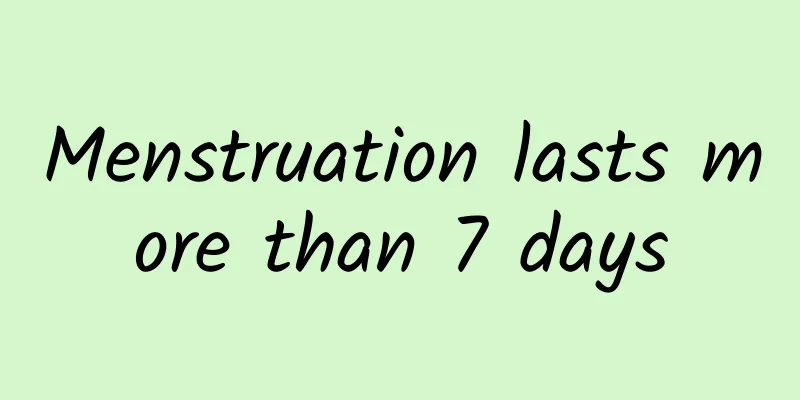How to treat acute pharyngitis and how to prevent it in daily life

|
Acute pharyngitis is an acute pharyngitis caused by lesions in the pharyngeal mucosa, submucosal tissue and lymphoid tissue. It is most common during the change of seasons and is usually caused by viruses and bacteria. The symptoms of the disease are similar to many of those of a cold. So how to treat acute pharyngitis? How to prevent it in daily life? Causes Acute pharyngitis is often caused by cold, excessive fatigue, excessive smoking and drinking, which leads to a decrease in systemic and local resistance, allowing pathogenic microorganisms to take advantage of the situation and invade the body, thus causing the disease. The pathogenic microorganisms are mainly rhinovirus, adenovirus, influenza and parainfluenza viruses, and some patients may be caused by hemolytic streptococci or pneumococci. Clinical manifestations The disease starts with dryness and burning in the throat, followed by pain, which worsens when swallowing and coughing. Hoarseness and difficulty speaking may also occur, sometimes accompanied by fever, general malaise, joint pain, headache, and loss of appetite. Examination shows diffuse congestion and swelling of the oropharyngeal and nasopharyngeal mucosa, edema of the palatine arch and suspensory folds, redness and swelling of the posterior pharyngeal wall lymph follicles and lateral pharyngeal wall; yellow-white punctate exudates may appear on the surface, and the mandibular lymph nodes may appear enlarged and tender. examine 1. Blood routine test Because most of the infections are viral, the white blood cell count is usually normal or low, with an increase in lymphocytes. Patients with bacterial infection may have an increase in neutrophils and a left shift in the nucleus. 2. Etiology Because there are many types of viruses and identifying the type does not obviously help with treatment, there is generally no need for definitive etiological testing. For suspected bacterial infection, bacterial culture can be performed to determine the bacterial type and drug sensitivity tests can be performed to guide the clinical use of antibiotics. 3. Chest X-ray Routine examinations are not necessary. Patients with more severe or prolonged illness may undergo a chest X-ray to rule out lower respiratory tract infection. treat Since there is no specific antiviral drug at present, clinical treatment is mainly symptomatic, and at the same time, people should quit smoking, get enough rest, drink plenty of water, maintain indoor air circulation, and prevent and treat secondary bacterial infections. 1. Symptomatic treatment You can take lysozyme tablets, iodine lozenges, etc.; gargle frequently with warm and light salt water; if you have severe throat pain or high body temperature, you can take acetaminophen orally, or inject Antongding, Bupleurum injection, etc. into the muscle. 2. Antimicrobial therapy If there is evidence of bacterial infection such as increased white blood cell count and pharyngeal pus, medication can be used according to local epidemiological history and experience, and oral penicillin, first-generation cephalosporin, macrolide or quinolone can be selected. It is rarely necessary to select sensitive antimicrobial drugs based on the pathogen. 3. Antiviral drug treatment If the patient has no fever, normal immune function, and the onset of illness exceeds 2 days, it is generally not necessary to use it. For immunocompromised patients, it can be used routinely in the early stages. Ribavirin and oseltamivir have a broad antiviral spectrum and have strong antiviral effects against common respiratory viruses, thus shortening the course of the disease. 4. Traditional Chinese medicine treatment Traditional Chinese medicines with heat-clearing, detoxifying and antiviral effects can be used to help improve symptoms and shorten the course of the disease. prevention 1. Strengthen exercise, improve physical fitness, live a regular life and diet, improve nutrition, and prevent colds. 2. Avoid catching cold and overwork. 3. Avoid contact with dust, smoke and irritating gases. 4. The elderly, the weak and the susceptible should pay attention to protection, wear masks when going out when respiratory infections are prevalent, and avoid going in crowded public places. |
<<: What to eat for pharyngitis? 10 dietary recipes to relieve pharyngitis
>>: Pharyngitis and bad breath are annoying, a cup of tea can help you solve them!
Recommend
Is moxibustion useful for lower back pain?
When patients have lower back pain, they usually ...
What to do with varicocele dilatation? Treatment methods of traditional Chinese medicine
Varicocele is a common disease in men's medic...
The difference between liver palm and normal palm
The appearance of liver palms is mostly closely r...
Should you pay attention to postpartum hemorrhoids? Be careful not to pass hemorrhoid poison to your baby!
Hemorrhoids are soft venous masses formed by the ...
How to slow down aging
Aging is an inevitable process for the human body...
What are the methods of TCM to nourish the kidney?
Modern people are under great pressure at work, s...
Nature and flavor of Cornus officinalis
The Chinese medicinal material Cornus officinalis...
Can angelica and cordyceps be stewed together?
Angelica and Cordyceps can be stewed together. Th...
Menstrual regulation and pregnancy promoting pills
The menstruation regulating and pregnancy promoti...
Effects of Yindanpinggan Capsule
Yindan Pinggan Capsule is a medicine used to prot...
How to relieve palpitations and chest tightness after drinking
Many people suffer damage to their organs due to ...
How to treat facial muscle atrophy?
People who suffer from facial muscle atrophy are ...
Guidelines for the prevention and control of hand, foot and mouth disease
Hand, foot and mouth disease is a common disease ...
What kind of tea should I drink for liver and gallbladder fire
Many people have experienced a stage when their l...
Treatment of endocrine disorders with traditional Chinese medicine prescriptions
Endocrine disorders are a common disease among fe...









